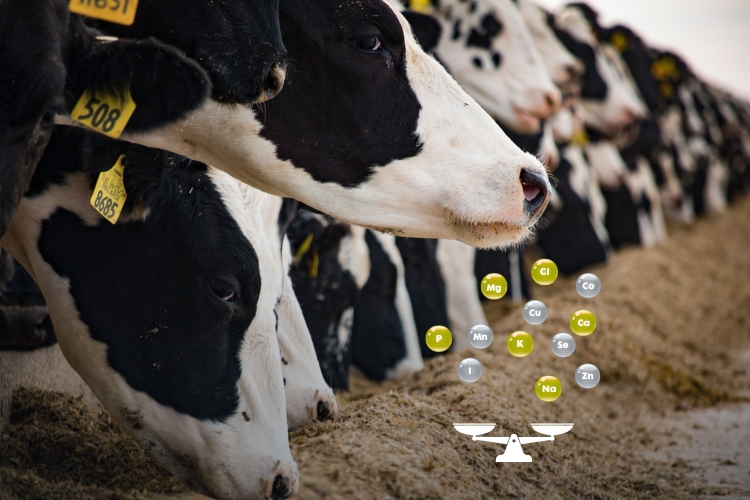
Minerals in balance: when less is more
- Sustainable precision farming
Over-supplying dairy cows with trace minerals on the other hand, can lead to:
The goal of trace mineral management is to achieve optimal mineral supply, avoiding trace mineral deficiencies in cattle, but also avoiding trace mineral toxicity in cattle through excessive mineral supplementation and avoiding higher costs without a return on investment.
It can be challenging to accurately monitor the total mineral supplementation in your herd’s ration. However, because oversupply carries several risks, it’s important to ensure that the mineral products you’re using are current and properly balanced.
Click on the ![]() icons below to find out more.
icons below to find out more.

Balancing your overall mineral supply and improving the quality of trace mineral sources used can have several benefits for the farm enterprise:
Find out more about Selko IntelliBond hydroxy trace minerals
Click on the ![]() icons below to find out more.
icons below to find out more.

Optimising your mineral supply involves reviewing the source and amounts of minerals provided to your herd. Managing mineral intake carefully helps avoid oversupply, which can lead to increased excretion of minerals into the environment.
Selko IntelliBond was the first improved source of trace mineral nutrition with a Life Cycle Assessment (LCA) that demonstrates a reduction in carbon intensity of milk production, decreasing CO₂ equivalents per kilogram of ECM by 1.5–2.0%.
When planning your on-farm mineral supply, it is important to consider all minerals and vitamins required by the animals, with IntelliBond trace minerals forming one component of the overall mineral strategy.
